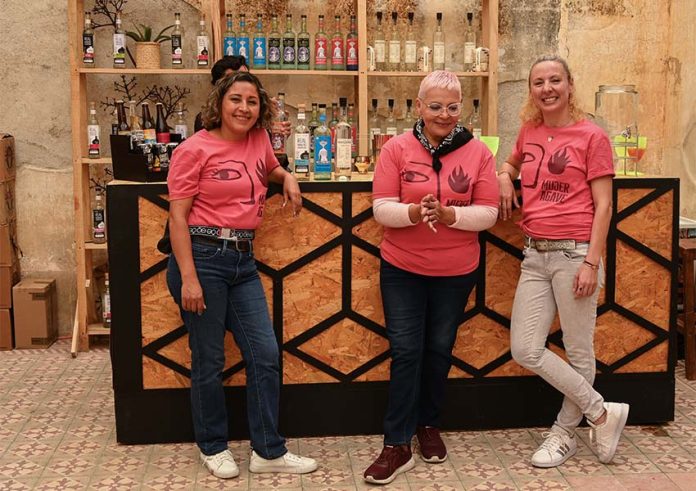Having documented the world of agave spirits for the last decade, I have seen some significant shifts and developments. A highlight is the growing confidence and presence of women in the industry.
In December, Oaxaca city hosted a new kind of mezcal festival, called Mujer Agave — an event in which women in the agave spirits industry came together to share their work, experience and passion.
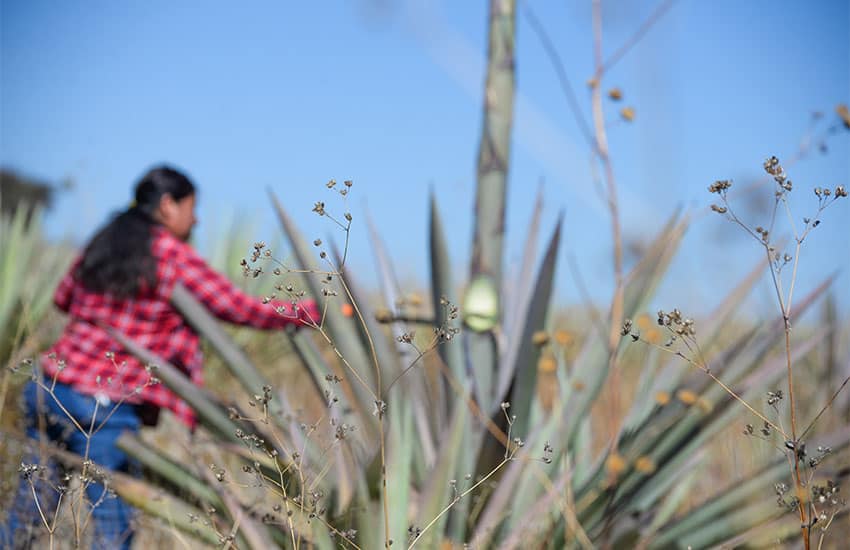
The three women running it — Sandra Ortiz Brena, Silvia Philion and mezcalera Graciela Ángeles — have forged a path for other women working with mezcal: Ortiz and Philion run two of the best-known bars in Oaxaca, InSitu and Mezcaloteca respectively. Ángeles carries the torch for the prestigious brand Real Minero. She is often described as a woman leading the way in the agave spirits industry.
Ángeles’ strength and skills have won her fame from the earliest days of the international mezcal “boom.” Other mezcaleras whose names are always at the tip of the tongue when discussing “women in mezcal” in Mexico include Reyna Sánchez and Berta Vásquez.
These women have been bold, making a name for themselves in a predominantly masculine field. Until recently, however, it felt like they were the exception to the rule, a novelty rather than people in an accepted position of equality.
Fortunately, in the last few years, more and more women are finding their place in the mezcal industry, running bars and brands and heading production.
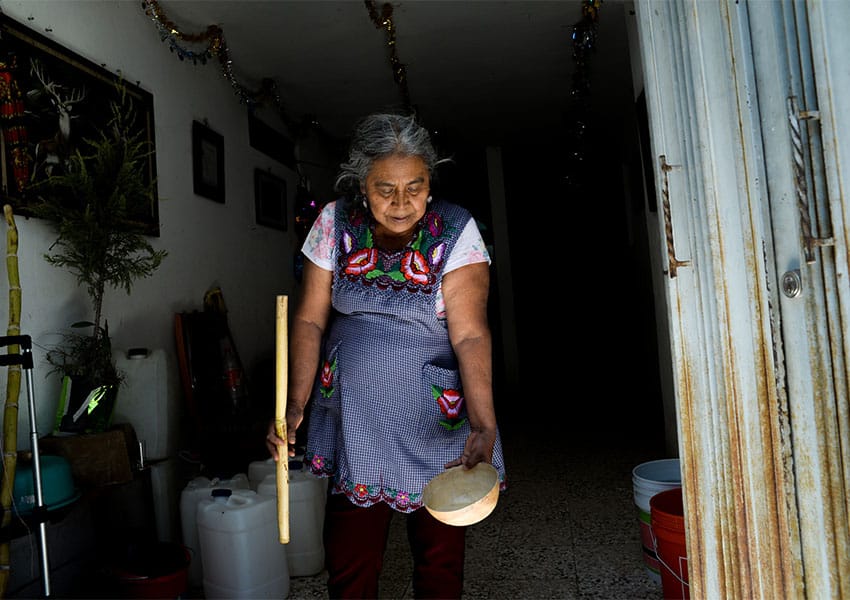
During my earliest visits to palenques (mezcal distilleries), the men were front and center — called mezcaleros. Often their spouses — equally involved in managing production — did not claim a title beyond “the mezcalero’s wife.”
This is something that up-and-coming mezcalera Jessica Hernández is keen to change.
I first met Hernández at a mezcal event where she was representing her families’ product, Espina Dorada (Golden Spine). Since then, I visited their palenque many times, learning more about her respect for her ancestors, her experience in the industry and her vision for the future.
“I like working with this distillate because it is more than a drink; it is history, a culture and tradition that my predecessors have transmitted to me, and I would like to preserve their legacy and essence.”
Reverence for the women in her history is evident as you arrive at the Espina Dorada palenque. From the road, you can see a stunning mural of a healer on the side of the distillery, representing Hernández’s female ancestors that worked with the medicinal properties of mezcal.
Hernández is a fourth-generation mezcal producer of Zapotec descent. She was raised on a palenque in Santiago Matatlán, Oaxaca, nicknamed “World Capital of Mezcal.”
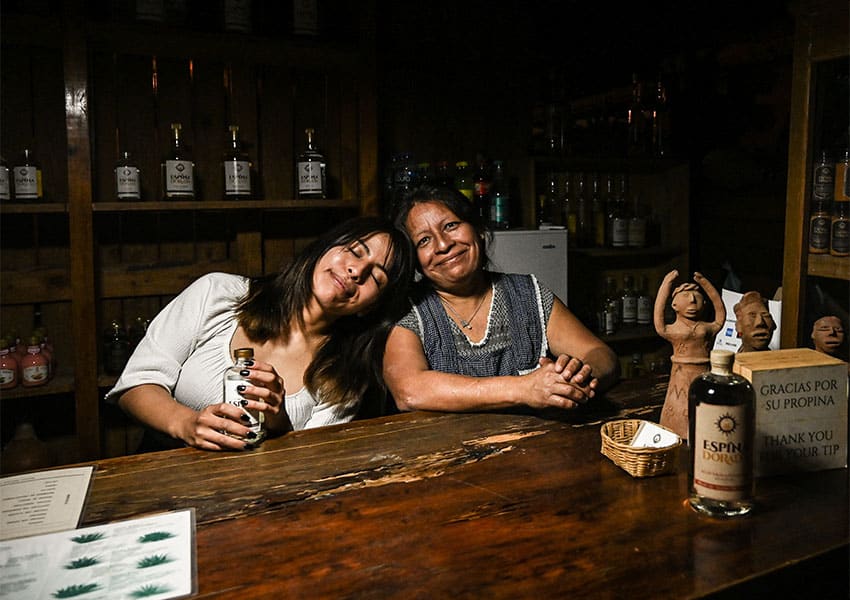
“I played among agave, learning about maguey care [the cousin to blue agave that’s used to make pulque], techniques, mezcal and pulque production,” she said. “Thanks to the tradition of my ancestors and ancestral techniques, today I produce my own batches of mezcal.”
Eventually, Hernández’s family moved from this agave-centric community to the highway by San Francisco Lachigoló, much closer to Oaxaca city, so that Hernández and her siblings could be closer to schools. Hernández , currently pursuing a master’s degree in business administration, is the first woman in her family with a university degree.
“Absolutely everything I have studied, and am studying, is for my family business. It allows me to reduce costs and improve the administration of our mezcal.”
The focus on higher education is just one of the ways in which her parents supported Hernández. However, they also encouraged her to learn about the family’s traditions and its work on the palenque.
“When I was little, I helped my parents in whatever way I could. It’s a tough job, so at that time, I only guided the horse or stoked the fire, but little by little, I became more fully involved in this trade.”
She remembers how involved her mother and grandmother always were in production. Now each member of the family has their own role in making a batch, such as setting the oven or watching over distillation.
Berta Vasquez: How Berta came to be a Maestra Mezcalera
In an interview subtitled in English, Berta Vásquez discusses how she came to run her husband’s mezcal business only after he died, leaving her with four children.
For each batch, one person takes the lead and responsibility for the overall production, and they are the one who signs the final bottles.
“I make three or two batches per year. The rest… belong to my parents, and I help them however I can.”
Although Hernández’s family are now supportive of her endeavors, things were not always a smooth ride. She had to overcome certain societal expectations in a local culture where sons were the ones expected to carry on the family mezcal business.
“I have always been very rebellious,” she says. “I was not the longed-for eldest son of the culture… but I have always liked playing that role. I was the girl who, if they did not take her to the countryside, hid in the truck to be able to go.”
One of the traditions passed down through her family is that a unique batch of mezcal is made for each of the family’s newborns, saved for years until it’s drunk on their wedding day. Hernández, who’s unmarried, chose a different path. She says she wants to create her own milestone moment in which she’ll share that mezcal made for her as a newborn.
It has taken many years for mezcaleras to deconstruct ideas about the role of women in the tradition. Although they’ve made progress, Hernández says there is still much for which women haven’t been acknowledged.
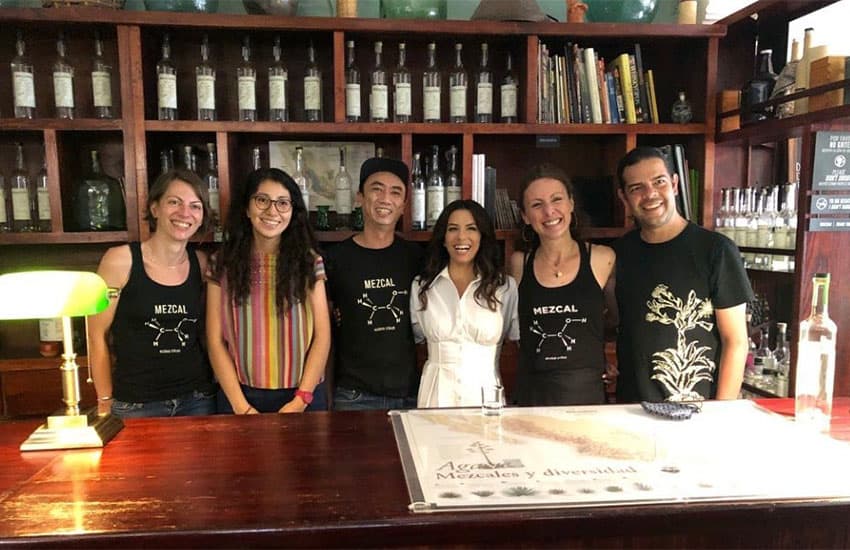
“The part played by women has always been important,” she said, explaining that women have always taught the next generations the art of cultivating and making mezcal….”
Women are finally finding their own space in all branches of the agave spirits industry, says Hernández, who wants to follow in her ancestors’ footsteps and teach others to make mezcal.
“Each of our bottles represent the history and essence of whoever produces it, paying tribute to our ancestors,” she said.
Every time I visit Hernández, she’s working on a new project, developing her family’s work with agave. As well as making new areas for visitors to enjoy their product, she’s building a space to share details of their past, including the tradition of medicinal practices.
She also has ambitious ideas to export the family’s product internationally. On this year’s International Women’s Day, she participated in a panel of mezcaleras, including previously mentioned icons of the industry, Reyna Sánchez and Berta Vásquez.
The world of agave spirits owes much to these iconic women who have forged the way for platforms like Mujer Agave. It feels like the dialogue is finally reaching a point where there will be inclusivity for women working with mezcal, rather than just a few famous exceptions.
Undoubtedly, Jessica will be a leader among this new wave of mezcaleras who open the door to a future where women in the industry become the rule.
Anna Bruce is an award-winning British photojournalist based in Oaxaca, Mexico. Just some of the media outlets she has worked with include Vice, The Financial Times, Time Out, Huffington Post, The Times of London, the BBC and Sony TV. Find out more about her work at her website or visit her on social media on Instagram or on Facebook.
